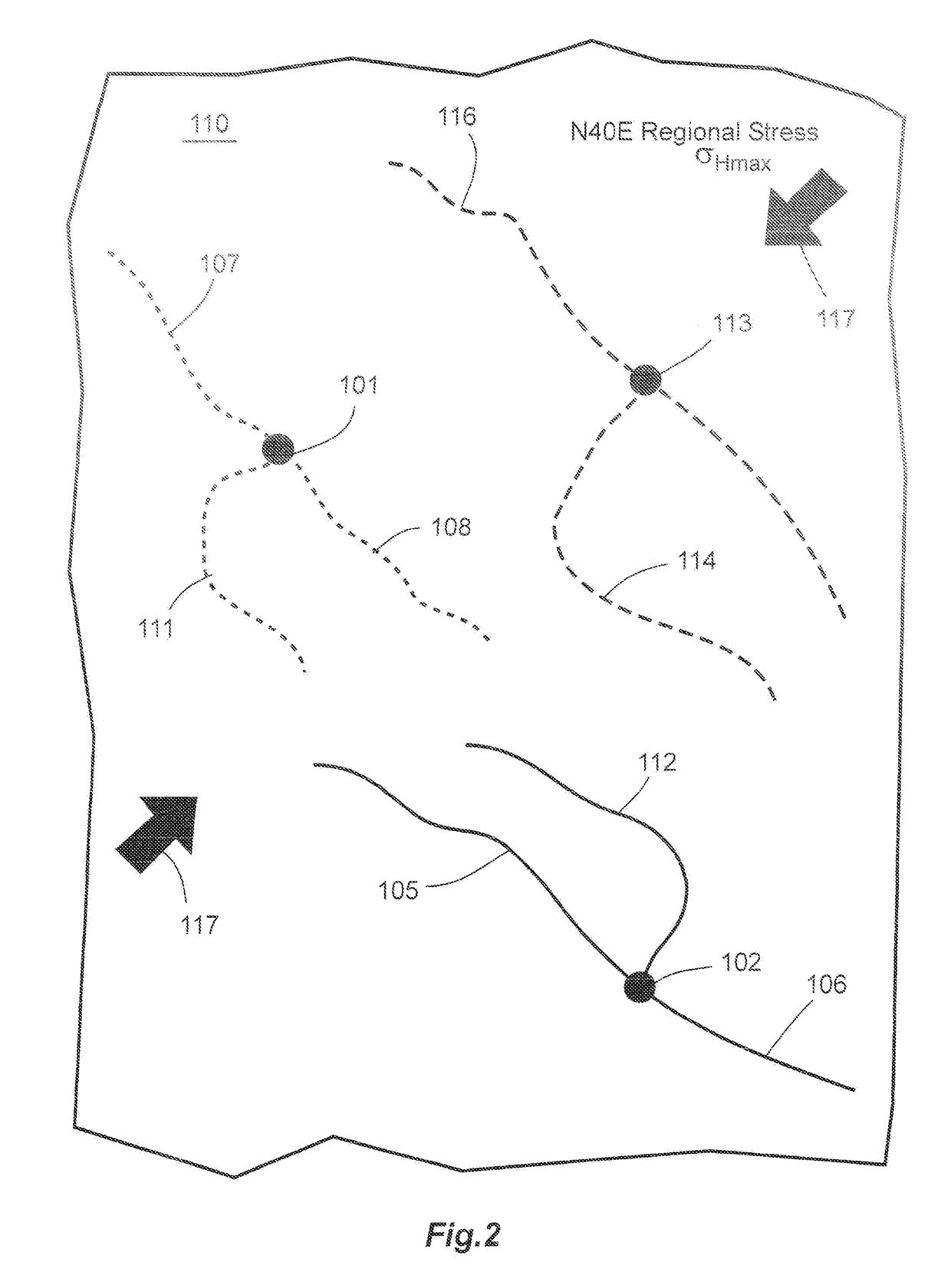Method For Modeling Stimulated Reservoir Properties Resulting From Hydraulic Fracturing In Naturally Fractured Reservoirs
a reservoir and hydraulic fracturing technology, applied in the field of hydraulic fracturing or refracturing systems of wells, can solve the problems of lack of actual modeling of hydraulic and natural fracture interactions in most current hydraulic fracturing design tools, and increase production. , the effect of reducing the impact of drilling and completion costs and the environmen
- Summary
- Abstract
- Description
- Claims
- Application Information
AI Technical Summary
Benefits of technology
Problems solved by technology
Method used
Image
Examples
Embodiment Construction
[0039]For the purposes of promoting an understanding of the principles of the present invention, reference will now be made to the embodiments illustrated in the drawings, and specific language will be used to describe the same. It is nevertheless understood that no limitation to the scope of the disclosure is intended. Any alterations and further modifications to the described methods, devices, and systems, and any further application of the principles of the present disclosure are fully contemplated and included within the present disclosure as would normally occur to one skilled in the art to which the disclosure relates. In particular, it is fully contemplated that the steps, features or components described with respect to one embodiment may be combined with the steps, features or components described with respect to other embodiments of the present invention. For the sake of brevity, however, the numerous iterations of these combinations will not be described separately.
[0040]...
PUM
 Login to View More
Login to View More Abstract
Description
Claims
Application Information
 Login to View More
Login to View More - R&D
- Intellectual Property
- Life Sciences
- Materials
- Tech Scout
- Unparalleled Data Quality
- Higher Quality Content
- 60% Fewer Hallucinations
Browse by: Latest US Patents, China's latest patents, Technical Efficacy Thesaurus, Application Domain, Technology Topic, Popular Technical Reports.
© 2025 PatSnap. All rights reserved.Legal|Privacy policy|Modern Slavery Act Transparency Statement|Sitemap|About US| Contact US: help@patsnap.com



